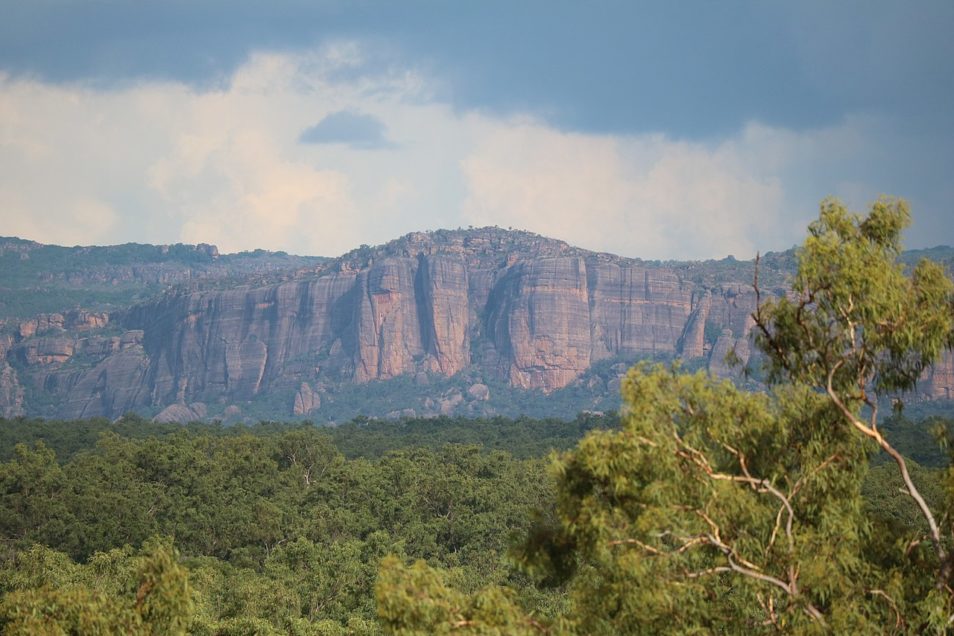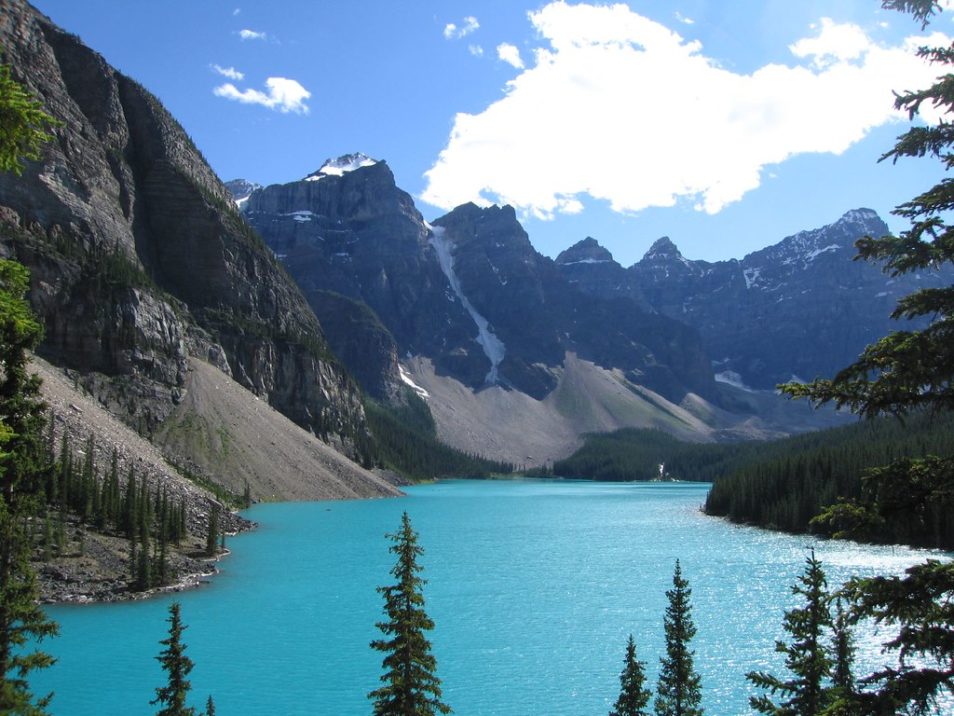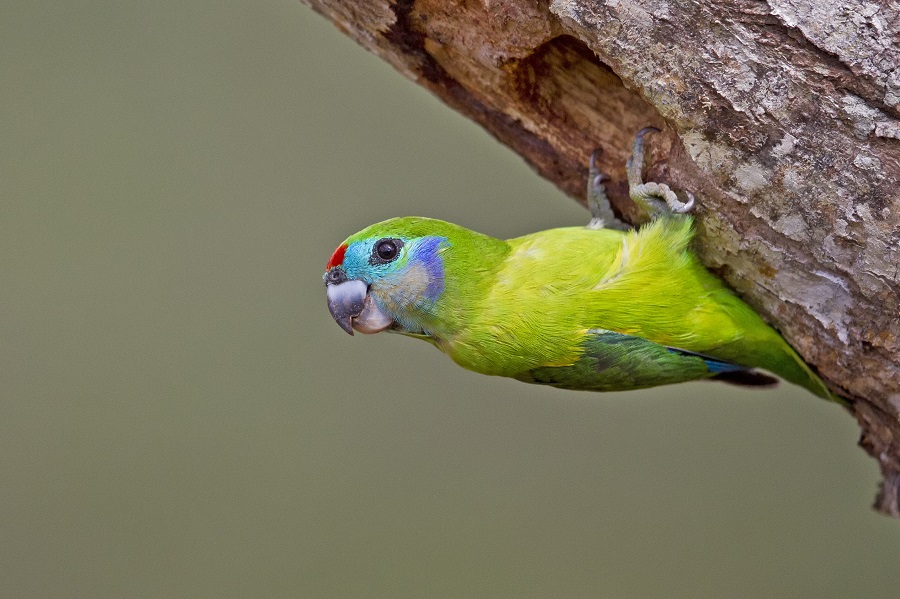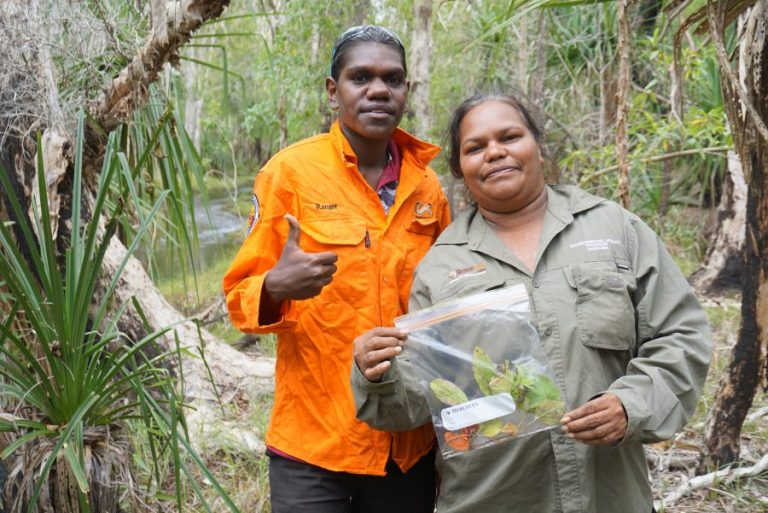What do Arnhem Land, the Bolivian Amazon, Canada’s British Columbia, the Zemongo reserve in the Central African Republic all have in common?
As well as being a damn impressive travel bucket list, they’re all home to incredible wilderness areas. Areas that are untouched by human development.
Places like this:

Rocky outcrop in Arnhem Land
Anbangbang Rock and forest in Arnhem Land. Image: Warren Poole.
And this:

Mountains with a blue lake and pine trees.
The Canadian Rockies is a special wilderness area in British Columbia and Alberta. Image: Greg Schechter.
But it’s not just their beauty and incredible biodiversity that’s so impressive.
We’ve undertaken new research with the University of Queensland and the Wildlife Conservation Society (WCS) into these areas. And we’ve found that these types of wilderness areas halve the extinction risk of biodiversity (specifically to plants, insects, and other invertebrates), compared to the risk of biodiversity outside of the wilderness areas.
Call of the wild: How do wilderness areas protect plants and animals?
Effectively, wilderness areas act as a buffer against extinction risk.
It might seem like common sense. But this study was the first ever assessment of the global importance of wilderness areas for the persistence of terrestrial (land) biodiversity.
“This is important because reducing the rate of global biodiversity loss is a major challenge facing humanity. But little is known about the role that remaining wilderness areas have in mitigating the global biodiversity crisis,” lead author Dr Moreno Di Marco said.
“The latest maps show that more than three million square kilometres of wilderness has been lost since the 1990s. This is an area the size of India. Maps also show that less than 20 per cent of the world can be called wilderness,” he said. “Yet until now, little was known about the consequences of this for preventing extinction of species.”

A double eyed fig parrot from northern Australia. Image: Dr Mat Gilfedder.
Thank the BILBI
The research collaboration took advantage of our global biodiversity modelling capability ‘BILBI’. It provides fine-scale estimates of the probability of species loss around the globe.
The team integrated this with the latest wilderness map generated by the University of Queensland and the Wildlife Conservation Society. This demonstrated that many wilderness areas are critical to prevent the loss of terrestrial species all over the world.
“Wilderness areas act as a buffer against extinction risk. So, the risk of species loss is over twice as high for biological communities found outside wilderness areas,” Dr Di Marco said.
“But wilderness habitat makes an even larger contribution, as some species can occur both inside and outside wilderness. This habitat is essential to support the survival of many species that otherwise live in degraded environmental conditions. It is essential that highly irreplaceable wilderness habitat is preserved, if we want to prevent, rather than react to, future biodiversity loss.”
Co-author Dr Simon Ferrier said this latest application complements the significant contribution BILBI made to informing key findings of the Global Assessment of Biodiversity and Ecosystems Services. This global assessment was released in May this year by the Intergovernmental Science-Policy Platform on Biodiversity and Ecosystem Services (IPBES). That report highlights an unprecedented and accelerating rates of species extinction worldwide.
The wilderness in our own backyard
One of the world’s best examples of environmental stewardship of our wilderness areas is Arnhem Land in Australia’s north.
Traditional Owners have managed this area for thousands of years, protecting this amazing landscape from emerging threats such as feral animals and wildfire. Now the next generation of land managers are working with us in a Learning On Country program to develop the skills and knowledge required to protect one of the most intact regions in the world.
In September our researchers joined the Learning On Country students, senior land owners (djungkay) and Traditional Owners to explore the various methods used to monitor the native and introduced fauna of the region.
This is just one practical example of how combining traditional wisdom with science and technology can tackling the land management challenges facing the globe’s vital wilderness areas.

Two women on country in Arnhem Land.
Justine Rogers and Yugul Mangi Ranger Maritza Roberts collecting plants. Credit: Dr Emilie Ens


19th November 2019 at 1:28 am
Hello Mr. Nick Kachel my name is Dhiva Putri L. H. I am an student of eleven high school Semarang from Indoesian. I strongly agree that the wilderness area is very important to the population of animals and plants. Wild forests play a very important role in the life of animals and ecosystems can be said as a major factor that is very influential on animal life and save a lot of biodiversity. Prevent global warming which is getting worse. in my opinion with the preservation of the wilderness can prevent the extinction of a type of species and can even increase the number of species that exist even endangered and not only that but also can make the world better. Thanks
17th November 2019 at 4:44 pm
Hello Mr.Nick my name is Kintan from Eleven Senior High School Semarang. Yes, i’m Indonesian. Let me give you some sentences. Did you say you had a program tha will protect our wilderness? I agree with the program because it can decrease number of animal extinction. As we know wilderness is a home for some animals. So it’s very important for them. Beside that, with that program we can also decrease our global warming. I think not only protect but you can also create or add more wilderness. It’s doesn’t matter if it’s small as long as it can be inhabited by some animals.
16th October 2019 at 3:49 pm
Bringing Biodiversity Conservation in from Wilderness , I think we have to replicate or factinating as a domestic plant that identified scientificaly or empiricaly by indigenous farmer traditionaly which having more benefits by most productively plant species or minimaly suspected as become a feature selected plant as industrial or commercially crop agriculture that purpose to protect and preventing from the extinction’and natural disaster (drought and burning extremely) a while giving positive economic impact to wider society. It is also named an innovative Conservation from Wilderness to more economic productively (through intensive breeding plant management) such are food plant, fruit and herbal/drug as strategical high commercially species (taken a smallest example only) and thousand species already exist over the park forest as wildernes to keep on native biodiversity). I believe that there are many plants esentially to moving replicate by protecting and preventing and also economic welfares benefiting reason.(( What are species plants that giving high productively as food and fruit plants most potentialy and commercially results to address a hunger food global sustainable products?)).(R.H).
27th September 2019 at 12:34 am
please consider changing your photo of the Canadian Rockies; Alberta’s Moraine Lake in Banff National Park pictured is one of the most glaring examples of an area suffering from increasing pressures from over-tourism in North America.